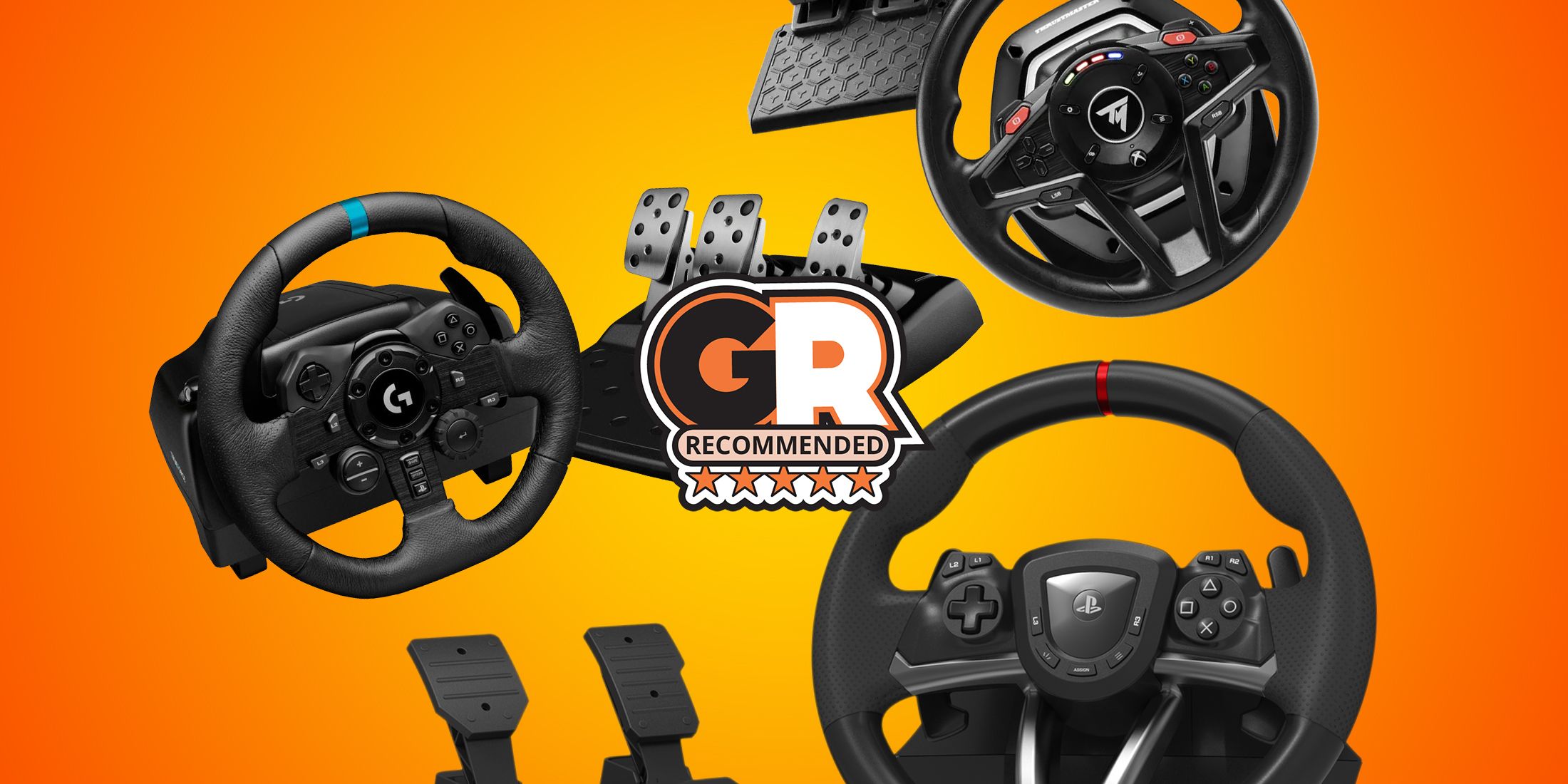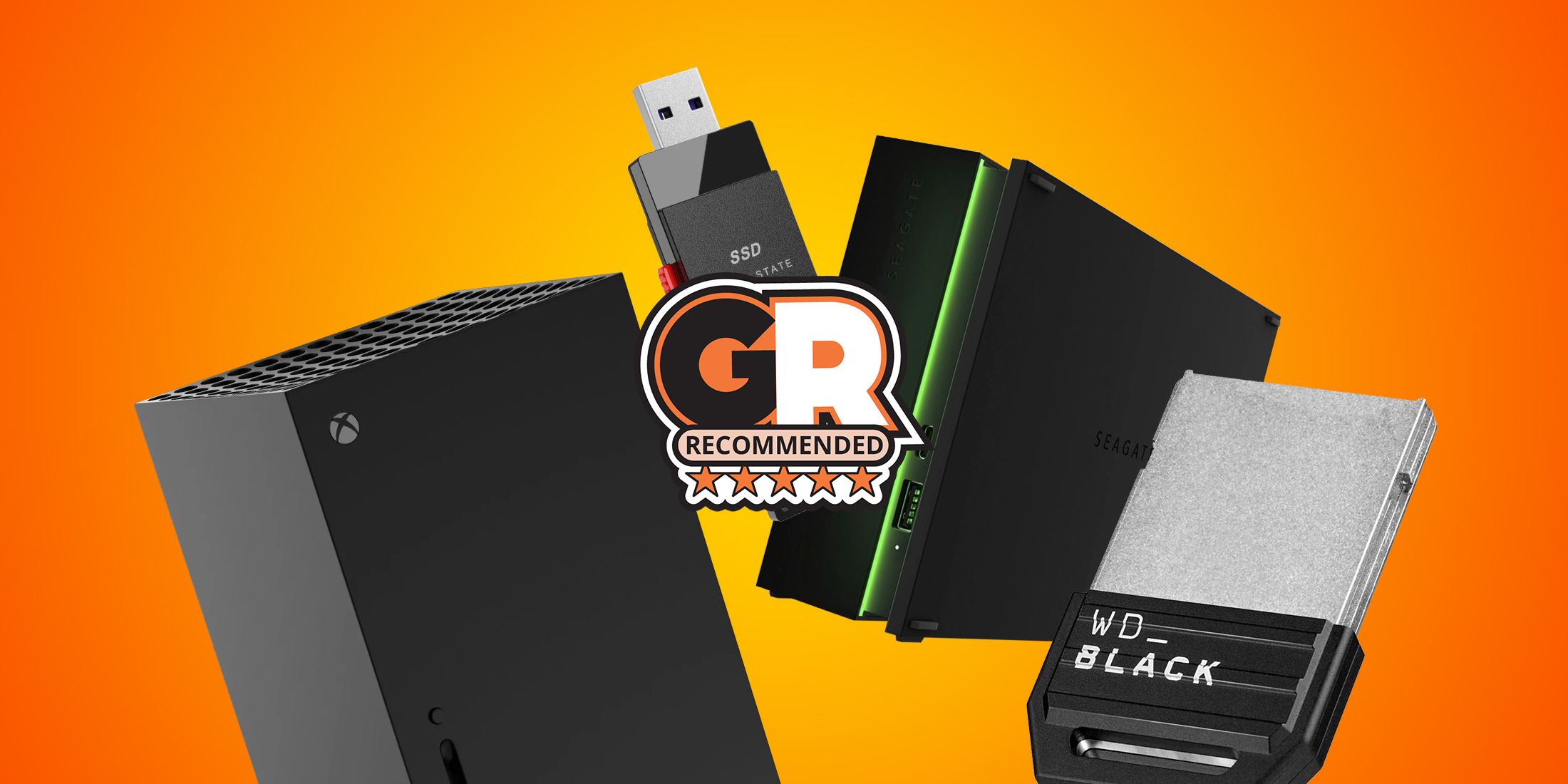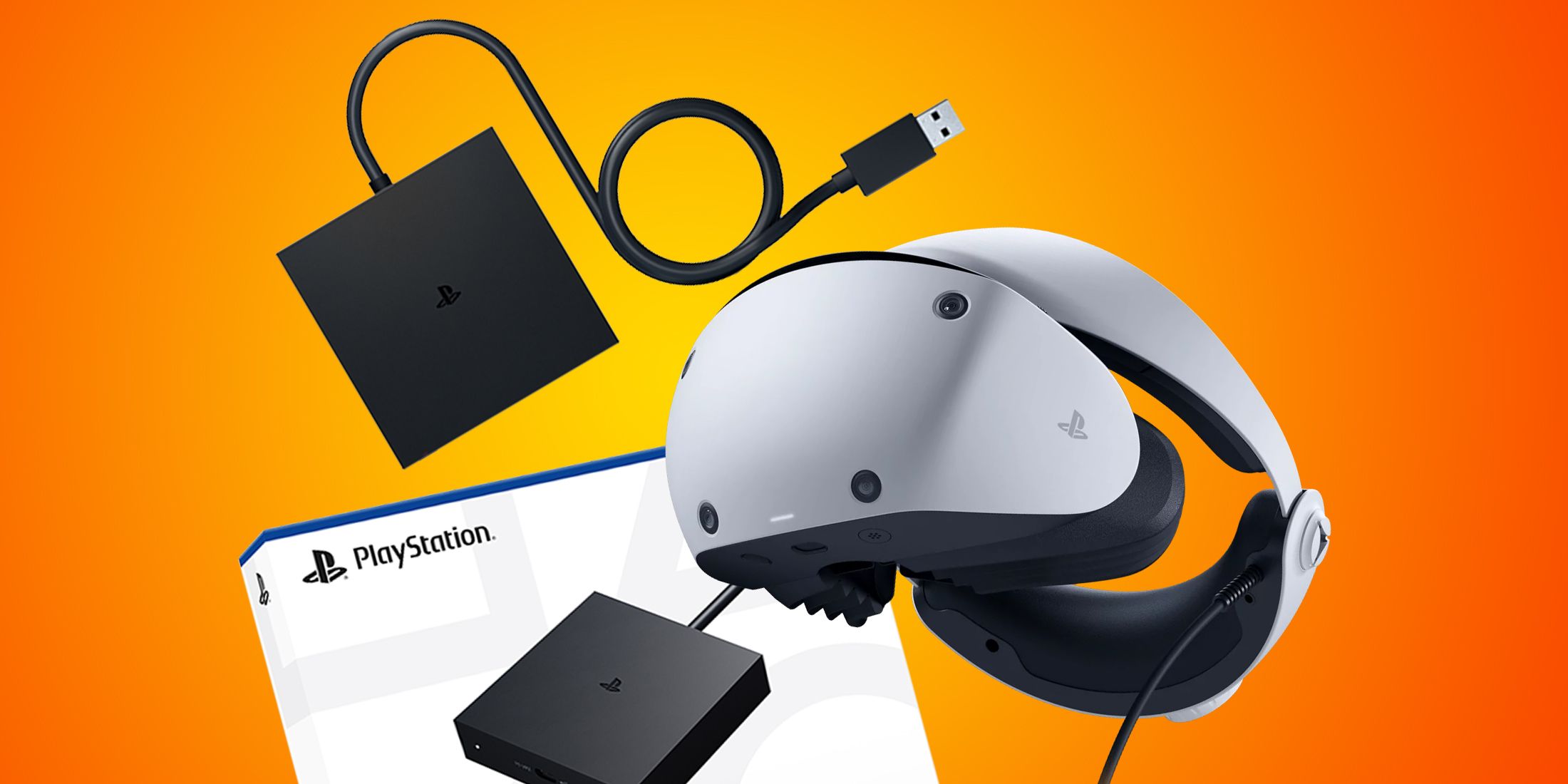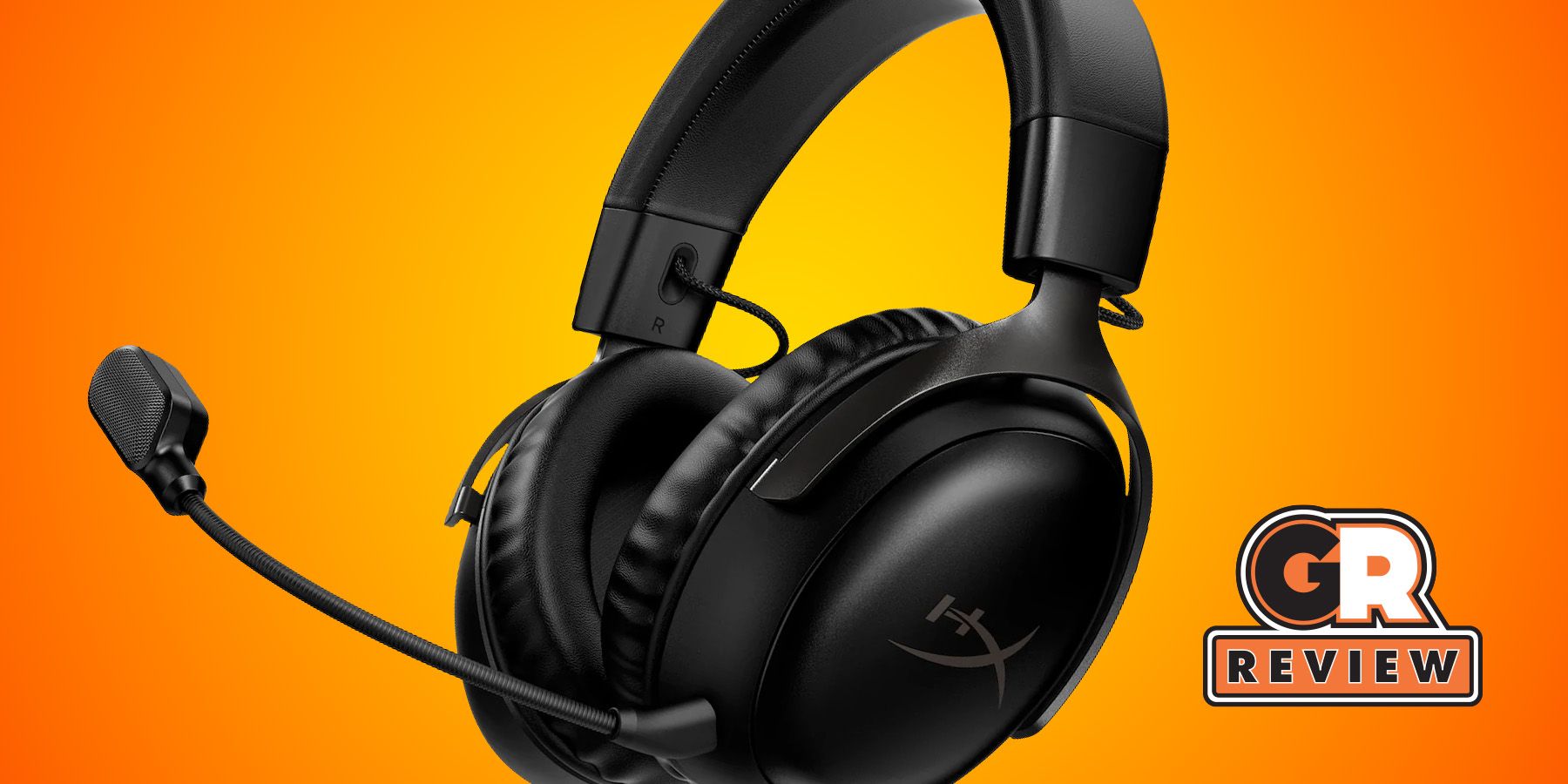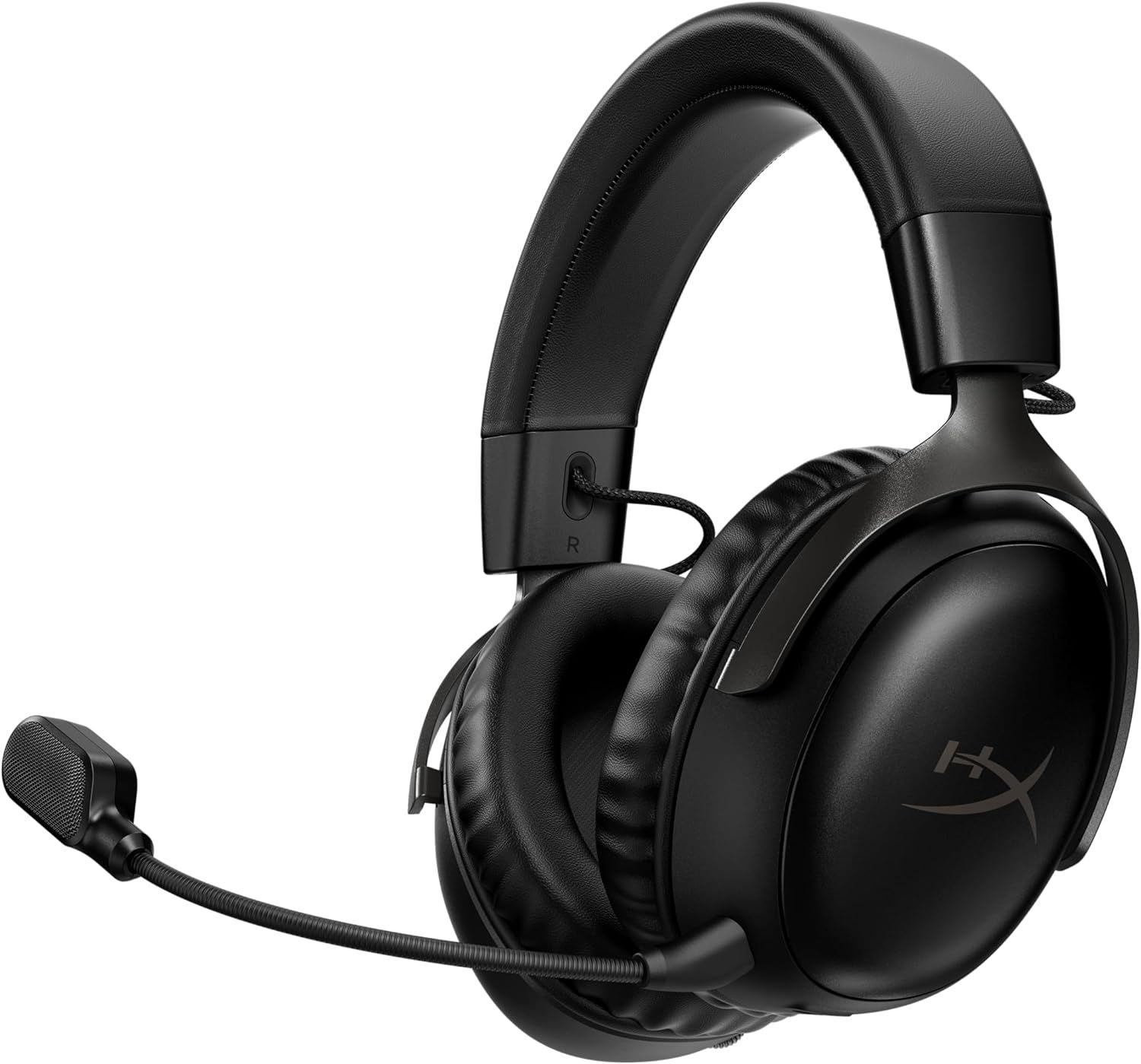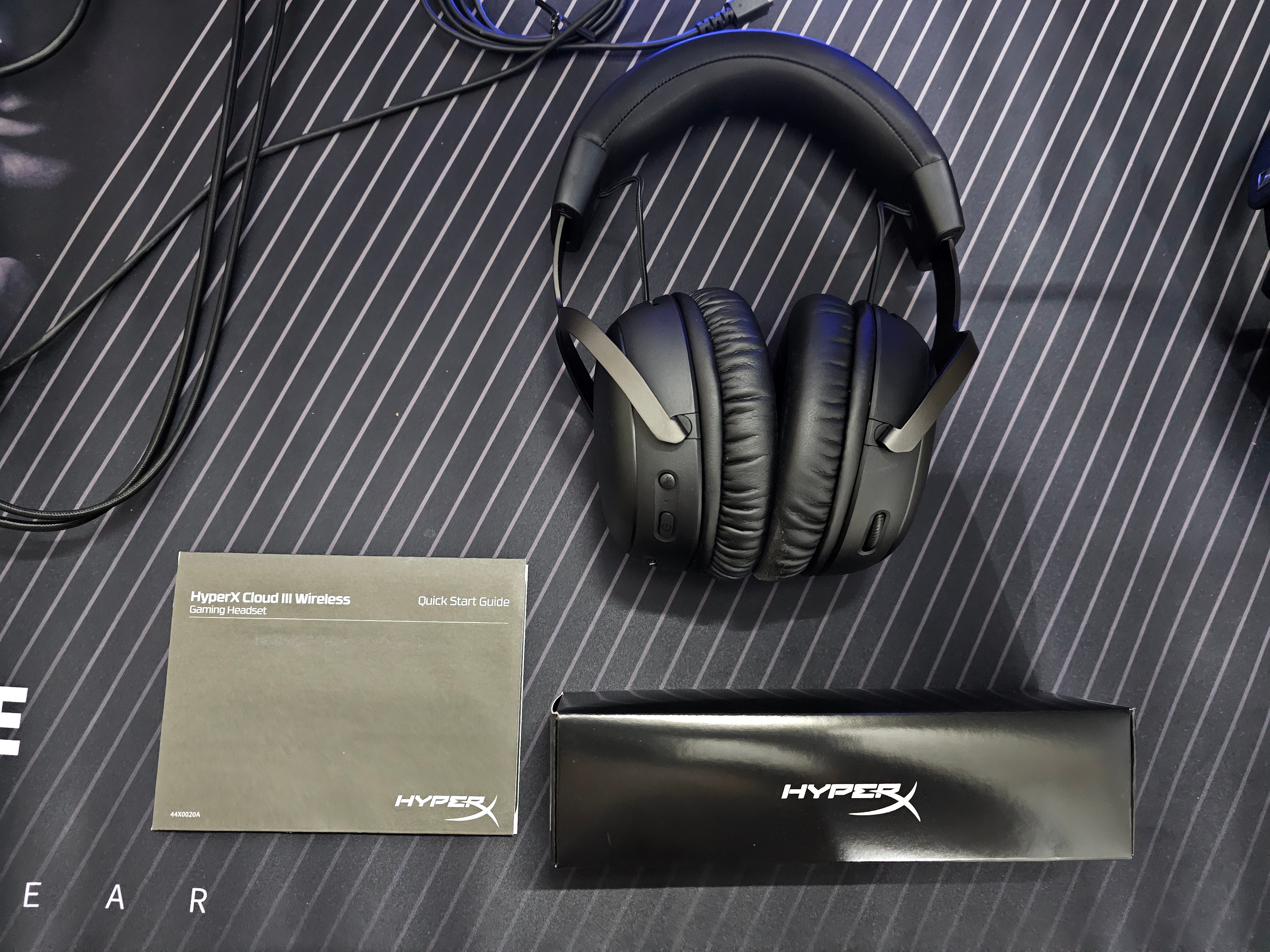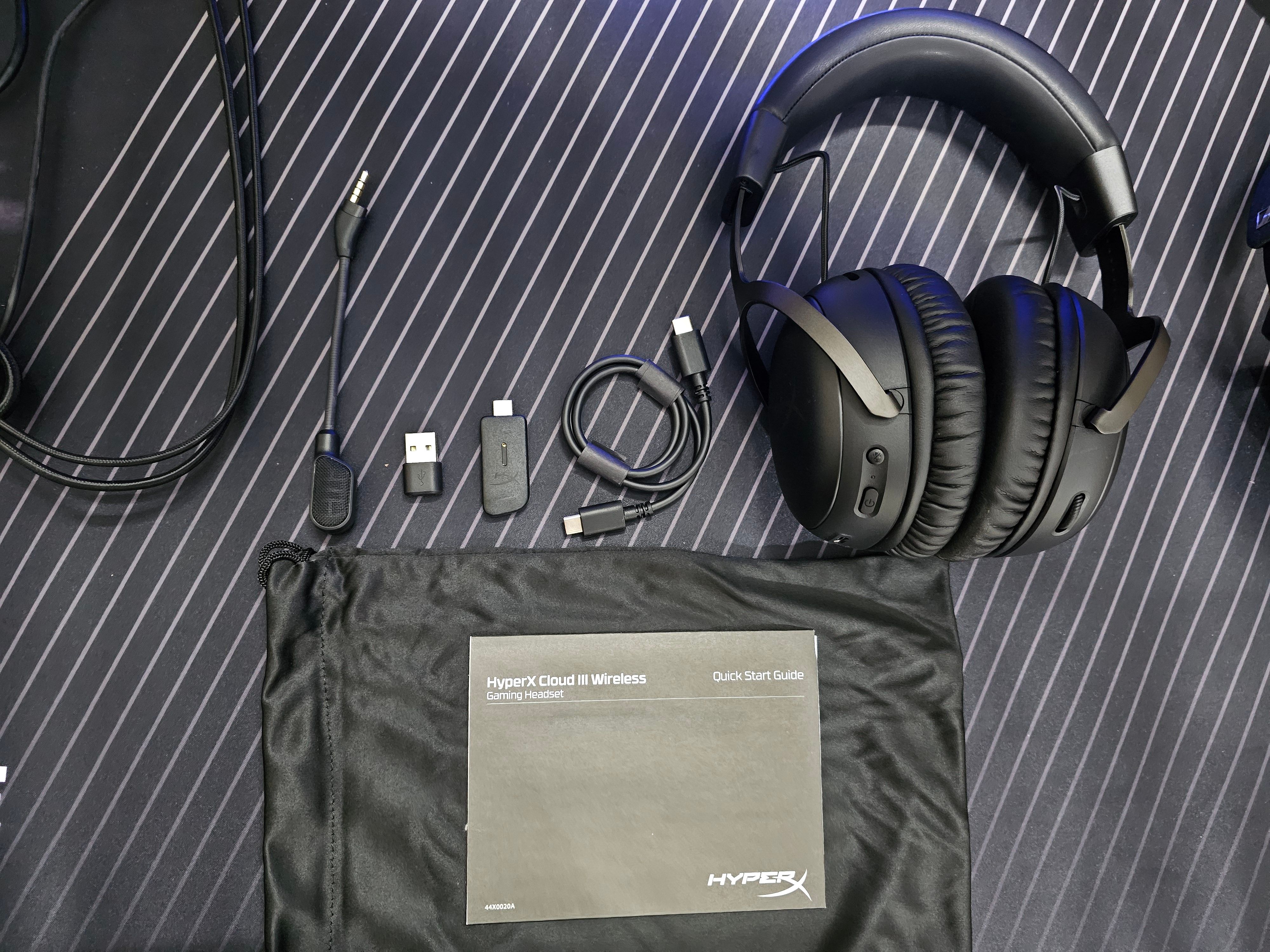Highlights
- The HyperX Cloud III Wireless offers excellent battery life of 120 hours, making it convenient for on-the-go gaming sessions.
- The headset features well-polished software for PC gamers, providing easy access to controls and information.
- Its 3D Spatial Audio and noise-canceling microphone make it a great choice for FPS titles, enhancing the gaming experience.
The HyperX Cloud III Wireless Gaming Headset is the wireless variant of the successor to one of the most popular gaming headsets in the past few years: The Cloud II. It offers an upgraded, more sensitive microphone, a higher frequency response range, and a significant battery life upgrade for the extra $20 in MSRP. It also throws in a little more heft and a free USB-A to USB-C adapter into the mix along with its USB-C dongle to ensure out-of-the-box compatibility with more consoles, such as the Nintendo Switch.
The HyperX Cloud III Wireless: Package Contents
The HyperX Cloud III comes in a similarly themed box as its predecessor, offering a white/red design for a headset that is entirely black, matching its internals. It also comes in its more popular red/black design for users looking to get the more well-publicized version of the gaming headset.
The Cloud III's packaging is no-nonsense in its approach. Users are greeted by the headset immediately once they open the box with its accessories in a compartment below HyperX's latest wireless Cloud offering.
The HyperX Cloud III Wireless comes with plenty of accessories in the box, all of which serve a purpose, including the following:
- Quick Start Guide (QSG)
- Detachable Microphone
- Wireless 2.4 GHz Dongle
- USB-C Charging Cable
- USB-C to USB-A Adapter
First Impressions
The HyperX Cloud III Wireless was tested on a PC and a PlayStation 5. User experiences seem to be similar for the Nintendo Switch but have not been tested as part of the review.
Setting Up
The HyperX Cloud III Wireless's setup was a relatively simple process. The headset's dongle, once connected, immediately got picked up by both the PC and the PlayStation 5 with the headset itself already paired and ready to go out of the box with some amount of charge. Unlike some of its more zealous competitors, the HyperX Cloud III Wireless works out of the box and does not prompt you to immediately install its software.
Software Options and Overview
This is not to say that HyperX's PC software options are lacking by any means. On the contrary, the HyperX NGENUITY application feels less bloated, more direct-to-business, and offers easier access to both controls and information than most of its alternatives. Immediately after an installation via the Microsoft Store, users are prompted to install dedicated DTS:X Drivers and restart to be able to access the headset's spatial audio features.
The headset also requires a firmware update and the latest at the time of writing is firmware version 4.1.0.9 for the Cloud III Wireless. While there is less to be said about the NGENUITY application thanks to its simplicity versus other options, it offers powerful one-window access to all the options one needs to get the most out of the Cloud III wireless without feeling either bloated or a simplified version of itself.
The HyperX Cloud III Wireless: Performance And Comfort
While it is nice to have a headset that connects, syncs, updates, and works without issues out of the box, most users looking to fork over the $170 the HyperX Cloud III asks are bound to look for answers beyond its easier use and bundled software. Thankfully, the HyperX Cloud III does not disappoint, making for an excellent partner in both casual and competitive multiplayer games. The 3D Spatial Audio comes in handy, particularly in titles like Call of Duty: Modern Warfare III.
Performance
For users who have previously used the Cloud II or the Cloud II Wireless, the immediate upgrade one can notice is the significantly better experience that the subtle microphone upgrade offers out of the box. Coupled with the ability to plug into both USB-A and USB-C ports as well as the long battery life means that the Cloud III wireless is not just a quality-of-life upgrade over the Cloud II but a significantly better headset than its predecessor.
The immediate difference coming from a Bluetooth headset is the better, more reliable range one can use these at thanks to it opting for a 2.4 GHz connection even as it handles its 3D spatial audio without any issues whatsoever. The headset feels solid and while it won't hold up against audiophile-grade cans, it doesn't need to for most users thanks to a relatively neutral soundstage, one of the best mics a gamer can ask for, and a good fit for most users, even if one would be left wondering what an active noise-canceling version of the same would feel like in comparison.
This is also where the 120-hour battery life flexes its muscle, with it dropping a few percentage points across a few multi-hour gaming sessions. This makes it a relative afterthought versus headsets like the now-aging Razer Nari Ultimate that were previously used as a daily driver that had users looking at battery life at regular intervals to avoid any random in-game surprises.
The Cloud III Wireless comes with a lifetime license for DTS Headphone:X Spatial Audio on PC, but console users might not have this functionality because of how audio is processed differently on those platforms.
Comfort
One can have the best gaming headset in the world in terms of hardware specs, but it could still turn out to be a terrible experience if it isn't comfortable to wear for those long gaming sessions that we are all prone to every once in a while. Thankfully, the HyperX Cloud III Wireless does not have that problem.
The headset, which also touts (and backs) its durability, also comes across as one of the most comfortable daily drivers one can use for daily sessions as well as extended weekend gaming nights. That's even as it adds a bit of weight versus its predecessor and some of its more lightweight counterparts.
This could be in part due to the HyperX signature memory foam, which is marketing-speak for essentially stating the obvious. The Kingston HyperX Cloud III Wireless is one of the most comfortable gaming headsets money can buy in 2024 without exception, seamlessly taking the baton from the Cloud II and building upon its relatively well-positioned lead without issues.
Verdict: In The (Wireless) Clouds?
The HyperX Cloud III Wireless is essentially an upgrade by all means to the popular Cloud II and Cloud II Wireless. If users are leaning toward purchasing the latter, the extra $20 added to MSRP is more than justified here. The Cloud III Wireless offers some of the best battery life in the business, decent audio performance, and one of the best mics in the business by far.
It does so while being backed by a two-year warranty even as it pushes its durability and comfort narrative to an audience that has plenty of options. Users might not like the fact that it has no RGB lighting whatsoever with the only two LED indicators onboard being the power indicator and the (somewhat good-looking) microphone mute indicator, but this is probably one of the reasons that the headset can do the 120 hours of battery life it can. Most gamers, casual and competitive alike, will be more than happy with the tradeoff, however.
The lack of active noise cancelling is a factor here, but it's not a sore point, with it generally being available on higher-end gaming headsets. The utility is variable for most users who will not be using it in a noisy environment with the noise-cancelling microphone covering their needs. Users wanting to use the headset with their other BT-enabled devices or gaming laptops where additional USB ports are a sore point on an already scarce offering with smaller devices might not be thrilled to add yet another dongle for their needs, even if the Cloud III can swing both USB-C and USB-A routes.
All in all, the Hyper X Cloud III Wireless is an excellent product that caters to an audience of gamers including PC, PlayStation, and Nintendo Switch gamers. The added battery life means that it can be used on the go without needing to carry a charging cable for multiple weeks, something that works in its favor considerably versus most of its alternatives. With it already on sale at Amazon at a sub $20 discount at the time of writing, it is possibly one of, if not the best wireless gaming headsets you can pick up for under $150 without second thoughts.
Related Products
$200 | |
$150 | |
$100 |
The HyperX Cloud III Wireless competes with a plethora of wireless gaming headsets, all of which feature in the $150 to 200 price range. One of the most well-known of these is the Razer BlackShark V2 Pro, which trades at the higher end of the spectrum. This makes it an excellent but questionable value acquisition versus the competition, even as it uses the Razer Synapse software and packs a decent 70-hour battery life.
Users looking for a sturdier, price-conscious alternative to the BlackShark V2 Pro's wireless model can also look at the Corsair HS80 Wireless RGB headset instead. It packs slightly better software and excellent sound quality while prioritizing comfort even as it compromises on battery life, delivering only 20 hours between charges.
For those on a budget, the highly discounted ROCCAT Syn Max Air might be the only premium player currently on offer that delivers support for Bluetooth and an aesthetically pleasing design. Plus, the dock and 3D spatial audio support make it an excellent and interesting alternative to consider while on sale.
FAQ
Q: Is the HyperX Cloud III Wireless Gaming Headset currently on sale?
Yes, the HyperX Cloud III Wireless Gaming Headset is on sale at multiple retailers, including Amazon, where it trades at a $20 discount at the time of writing.
Q: Does the HyperX Cloud III Wireless Gaming Headset support USB-C?
The HyperX Cloud III Wireless Gaming Headset charges via and comes with a USB-C dongle. It also comes with a USB-A adapter for users intending to use it with legacy hardware or on a PC where USB-A ports generally outnumber their Type-C siblings.

